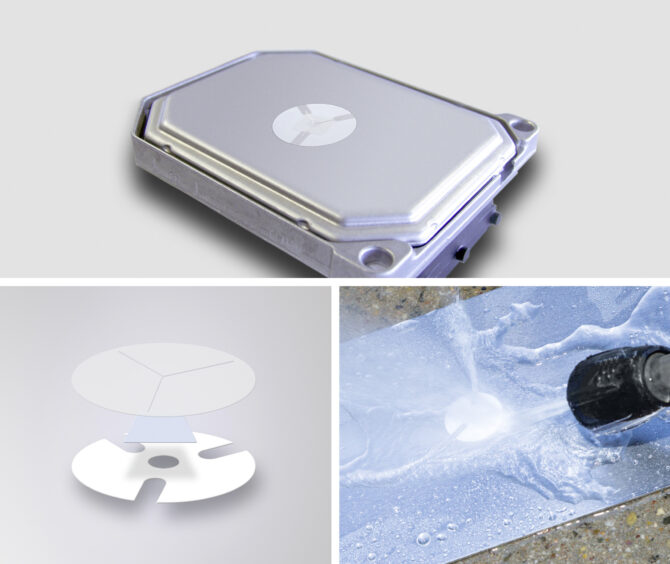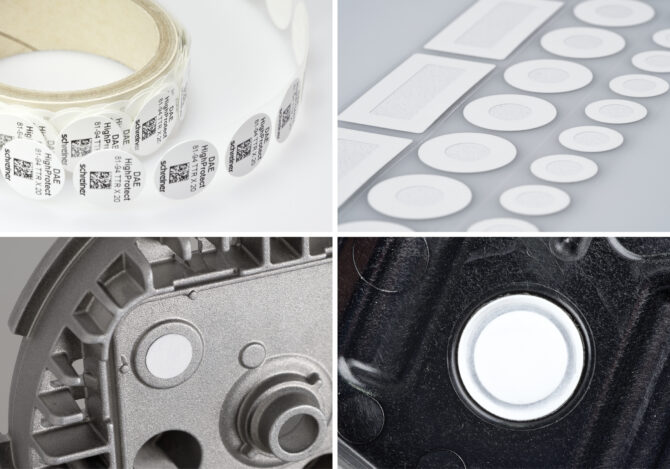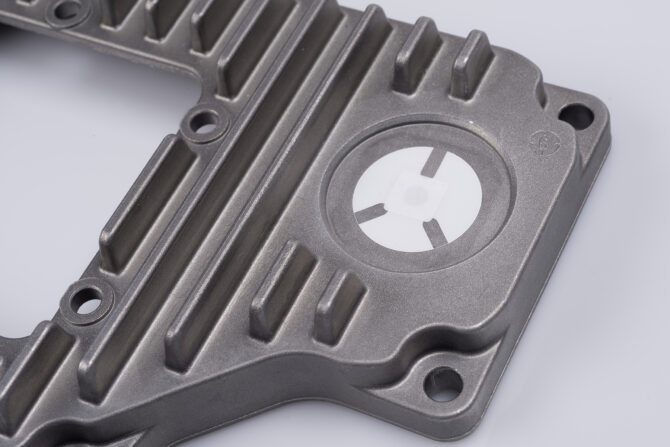
Component sealing’s pressure paradox
By Adrian Marggraf, senior product manager, Schreiner ProTech
Electronics Production / Materials Thermal management component equipment marking processes production security solutions thermalAllowing airflow while preventing water and hazardous media penetration is among electrical component manufacturing’s most persistent push-pulls
It’s an issue nearly as old as electronics themselves. And it’s both as complicated as a psychics equation and as simple as a seesaw.
The relationship between airflow allowance and watertightness can be confoundingly complex. In a cateogry as broad as electronics – everything from computers and televisions to printed circuit boards and e-vehicles – finding the ideal, often component-specific tradeoff between proper airflow and protection against water can be exceedingly difficult. But at the core of the equation, one constant remains steadfast: as one goes up, the other comes down. More airflow means less watertightness, and vice versa.
In this piece, we’ll explore the relationship between these two mission-critical elements of electrical components manufacturing. After setting guardrails around the topic by defining airflow and watertightness and their importance to electronic components functionality, the discussion will segue into methods of determining a component’s specific airflow needs and its correlation to pressure compensation. Identifying corresponding water entry thresholds also will be covered, as will proper application and testing parameters for all-encompassing airflow and watertightness solutions.
The Ins and Outs of Airflow & Watertightness
Airflow refers to the amount of air per unit of time that flows through a particular component or device. Shown as a volumetric flow rate (volume of air per unit time) or a mass flow rate (mass of air per unit time), in electronics engineering airflow indicates the gas permeability of the solution used to provide airflow – an often crucial element to preventing a component’s critical failure from ambient pressure buildup.

PCS HighProtect. Source: Schreiner Protech
Pressure accumulation is one of electrical components’ worst enemies. Any component housing inevitably contains air, and environmental changes can lead to this air becoming critically pressurized. Unsurprisingly, temperature – a cateogry comprising not only external elements but also the heat generated by a component’s operation – is the most frequent culprit, but other factors such as altitude and underwater pressure can also play detrimental roles.
When exaggerated, these pressure fluctuations can stress the seals around component housing, leading to a wide array of deformations, as well as leaks to seams, seals or connections. Once the housing is compromised, any number of problems occur depending on its component’s specific functionality. In some cases, the component has already been rendered useless by the time pressure builds up enough to break a housing seal. Other times, the housing’s compromise marks the first in a downward spiral toward total component failure.
The potential for water ingress is high on this list of problems. That, in a nutshell, is electrocial component manufacturing’s pressure paradox: to keep water from getting in, a housing seal must be tight but, crucially, not airtight. Seals protecting electrical components must give a little to gain a lot.
Here, a key term is “water entry point,” which is a measurement of a seal’s abilityto keep water out. A level rather than a location, the higher the entry point the better the protection. However, going all-in on watertightness sacrifices critical airflow, a path that leads to the same destination as a flooded housing space: component compromise and failure.
The key, of course, is finding the airflow sweet spot – the Goldilocks Zone yielding proper airflow and reliable protection against water ingress.
Solving the Pressure Paradox
A variety of solutions for proper airflow and watertightness are available, each with their own particular fortes and weaknesses. For example, one solution addresses a stringent quality control procedure in the automotive manufacturing lanscape: the so-called “icewater shock immersion” test. In this test, the heated housing is immersed in an icewater salt bath for several cycles. It is crucial that no water penetrates the housing via the membrane – an outcome requiring sufficiently high levels of water retention capacity.
If you look at the electrification of the vehicle in the same automotive environment, the housing volumes in the battery housing area are becoming ever larger, since the goal is to achieve a greater charge range. This means that smooth pressure equalization must be ensured with much higher flow rates. The battery housings are usually installed at points in the vehicle where a high water column can only act on the membrane to a limited extent, so a high airflow is at the forefront of the application.
An increasingly popular solution are pressure compensation seals, which are watertight, oil and dust repellent (also known as oleophobic) breathable membranes used to vent electronic housings, similar to a valve. The membrane ensures effective pressure compensation while preventing the intrusion of water, dust or dirt into the housing. Despite their minimal height, the robust seals can withstand the rigors of modern electrical and automotive lifespans.

Pressure Compensation Seals Source: Schreiner Protech
A strong example of the value of pressure compensation seals can be found in a sector whose prominence is exponentially rising: electronic vehicles. E-vehicles require robust, durable pressure compensation solutions in a variety of areas – including the battery and driving column – that must be resistant to harsh enviroments. Here, it is increasingly important for such solutions to be lightweight and diminutive, as these attributes simplify production processes and save on warehousing space and shipping costs.
In addition to allowing necessary airflow while preventing moisture ingress, pressure compensation seals offer a bevy of secondary benefits that have driven their growth curve. Most notably, such seals are available in various shapes and sizes, from miniscule films with near-pinpoint membranes to far larger versions. This makes them suitable for a slew of functions. To revisit e-vehicles, these would include charging protection, battery and motor production and lifespan management, and components marking and sealing.
Pressure compensation seals used in nameplates or as deluxe jet stream-resistance versions offer venting solutions suitable for customized printing, allowing manufacturers of electricual components to eliminate a process step and save associated material and maintenance costs. In this fashion, the seals serve dual roles of identification and an elevated class of protection, all while streamlining production.
In a production landscape where customizability is key, pressure compensation seals combine a key functionality with modularity; they can be round or angular, long or short, strict or comparably lenient in their protective properties. They also can incorporate labeling information or even scannable QR codes for additional, smartphone-enabled product information or instructions.
Attachment and Testing
Two other advantages of pressure compensation seals are the flexibility with which they can be affixed to electrical component housing, and the ease of pre-preduction testing procedures that allow for truly customized airflow solutions.
Pressure compensaiton seals are affixed via one of two ways: self-adhesion or ultrasonic welding. The process chosen is situation-dependent, but there are certain rules of thumb that can be followed. Self-adhesive solutions can be installed on all surfaces with low system acquisition costs, while ultrasonically weldable solutions should be limited to plastic surfaces.

PCS & Watertightness. Source: Schreiner Protech
Notably, acquisition costs for ultrasonically weldable solutions are substantially higher, and the joining technology requires a fair amount of manufacturing expertise. The reason that may be preferable is that their lack of adhesion components can bring advantages in industrial environments employing especially harsh chemicals.
Conveniently, airflow and watertightness tests comprise a brief and similar process involving different constants: tubes applying, respectively, pure pressurized air or pressurized air with dyed liquid in the venting hole. Crucially, one test is absolutist and the other is not.
With airflow, the goal is a result within that component’s peak functionality range. By contrast, watertightness is generally a zero sum game: not only must moisture be kept clear of the component’s housing space, but must also be kept from getting under the edge of the seal itself. Any moisture penetration is considered a failure.
Conclusion
From automobiles to electric toothbrushes, pressure compensation seals offer a versatile and effective means of allowing airflow while preventing water ingress. The consist of a waterproof and dustproof yet air-permeable membrane that enables air exchange in housings while protecting electronics against liquid media and dirt, and they stand out among solutions to keep components working – thereby protecting brands and satisfying customers.

Adrian Marggraf is Senior Product Manager for Schreiner ProTech
——————————————
About the Author
Adrian Marggraf is Senior Product Manager for Schreiner ProTech, a developer of functional film-based components and industrial marking and security solutions, including those involving thermal-transfer printing, laser marking, RFID, and pressure compensation. www.schreiner-protech.com
